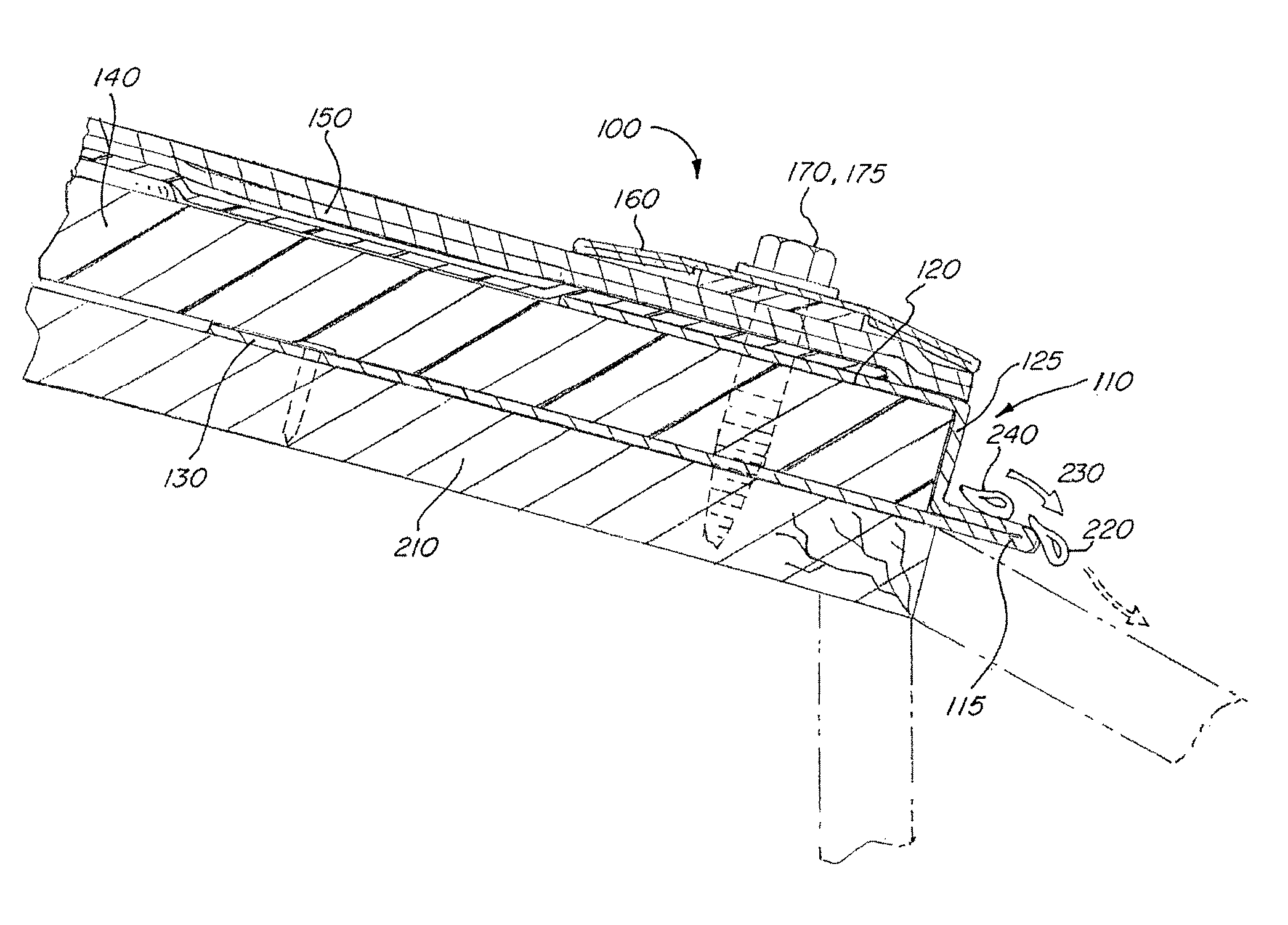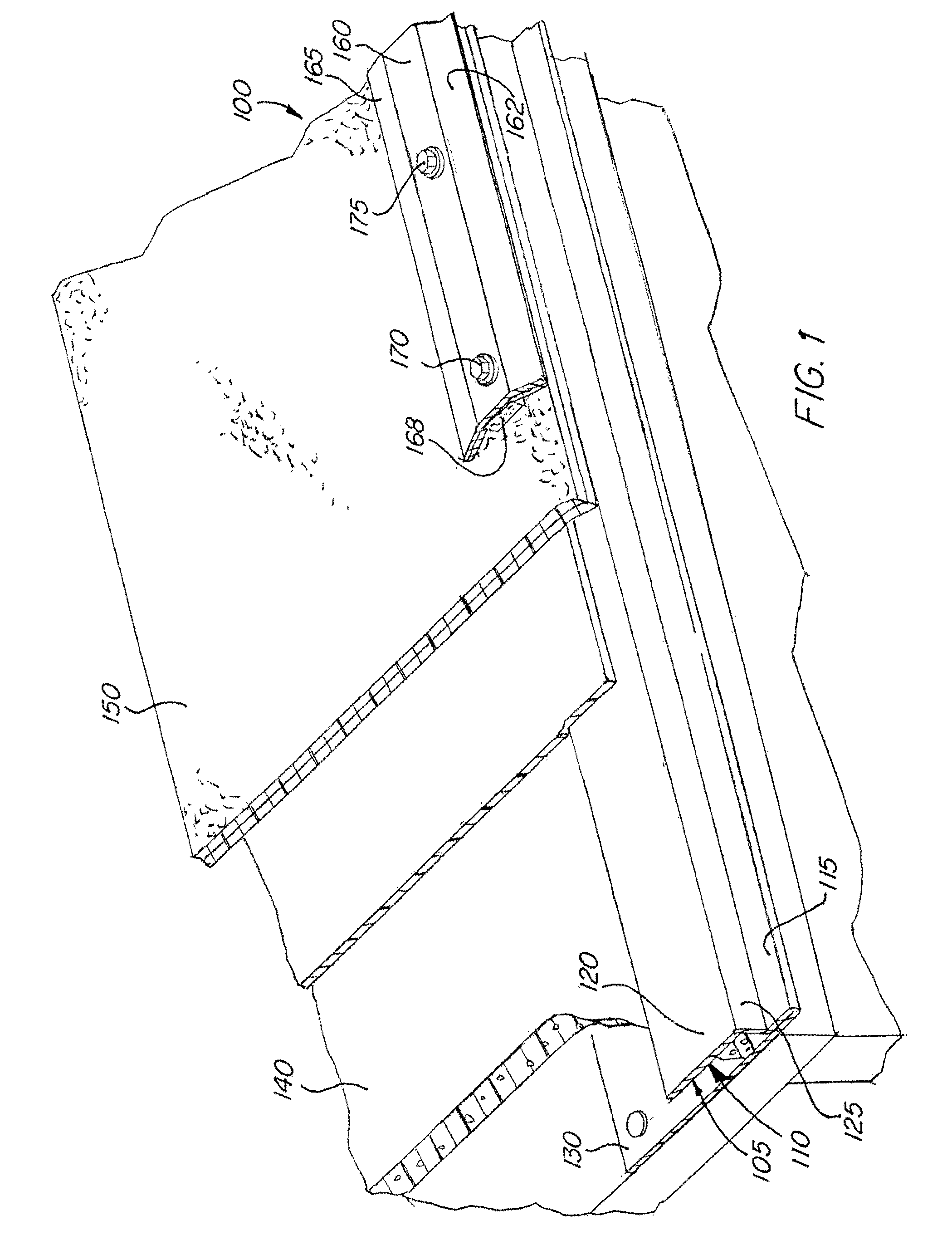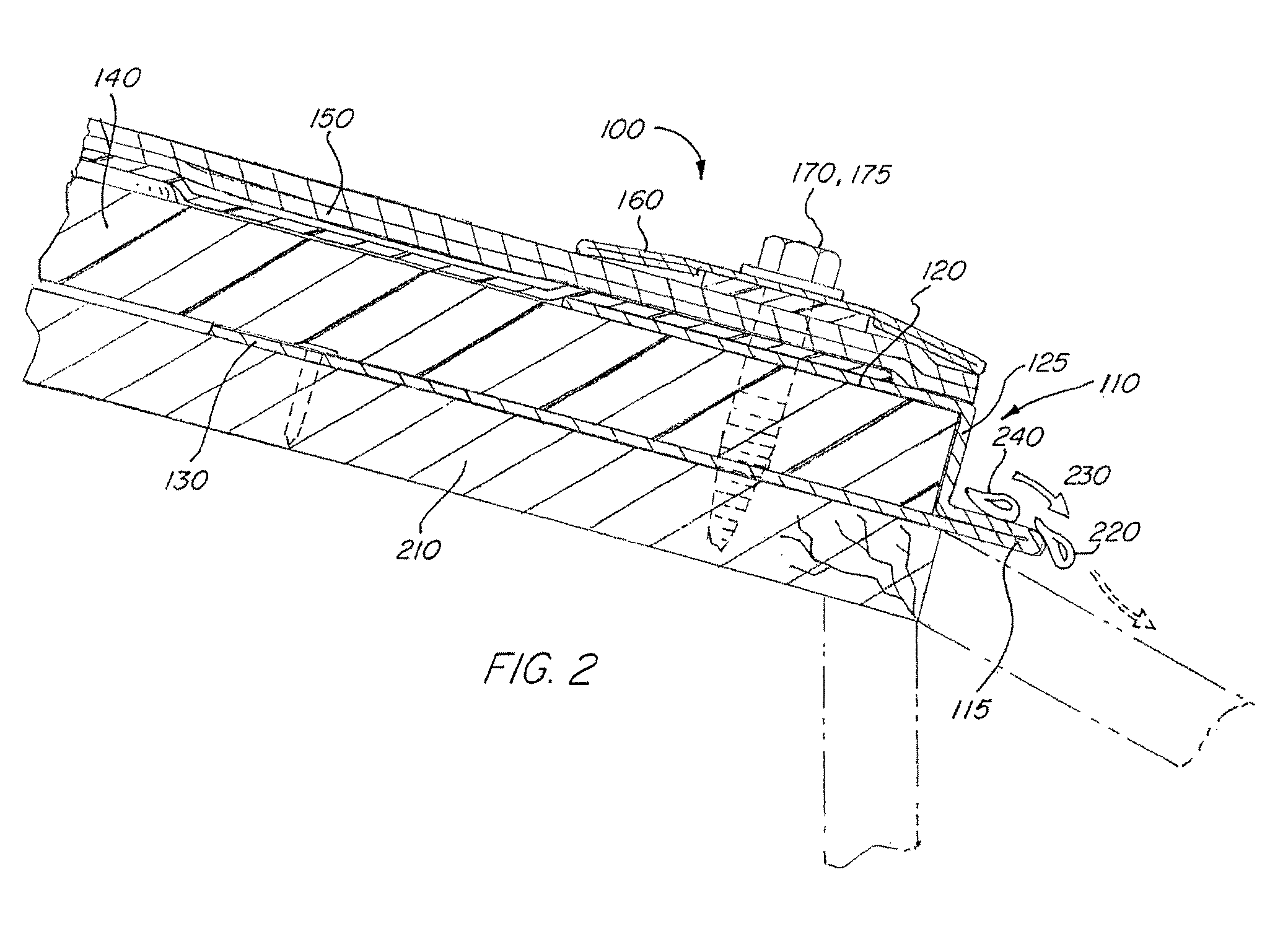Fascia cap for roof
a technology for roofs and fascia caps, which is applied in the direction of roof drainage, snow traps, building repairs, etc., can solve the problems of water entering the roof, rot and deterioration of the roof and building walls, and water penetrating the fascia cap, so as to achieve the effect of mitigating capillary action
- Summary
- Abstract
- Description
- Claims
- Application Information
AI Technical Summary
Benefits of technology
Problems solved by technology
Method used
Image
Examples
Embodiment Construction
[0031]Referring to FIG. 1, an assembly 100 fitting on the end of a roof in accordance with the present invention is shown. This assembly 100 contains a fascia cap 110 having an elongated drip edge 115, top edge 120, side edge 125, and bottom edge 130. In a preferred embodiment, the fascia cap 110 is made of a single material such as a metal, metal alloy, hard plastic, or other such material used in the roofing industry. The body 105 of the fascia cap 110 is preferably a U-shape where top edge 120 and bottom edge 130 are connected by side edge 125. Bottom edge 130 has drip edge 115 extending past U-shaped body 105.
[0032]The fascia cap 110 is designed to accept a roofing material 140, such as insulation, wood, foam, or any such material that is used in the roofing and construction industry. Shingle material 150 is adapted to lay flat against the top edge of the fascia cap. Single material 150 may be standard housing shingles or other such materials designed to protect a roof from wate...
PUM
 Login to View More
Login to View More Abstract
Description
Claims
Application Information
 Login to View More
Login to View More - R&D
- Intellectual Property
- Life Sciences
- Materials
- Tech Scout
- Unparalleled Data Quality
- Higher Quality Content
- 60% Fewer Hallucinations
Browse by: Latest US Patents, China's latest patents, Technical Efficacy Thesaurus, Application Domain, Technology Topic, Popular Technical Reports.
© 2025 PatSnap. All rights reserved.Legal|Privacy policy|Modern Slavery Act Transparency Statement|Sitemap|About US| Contact US: help@patsnap.com



